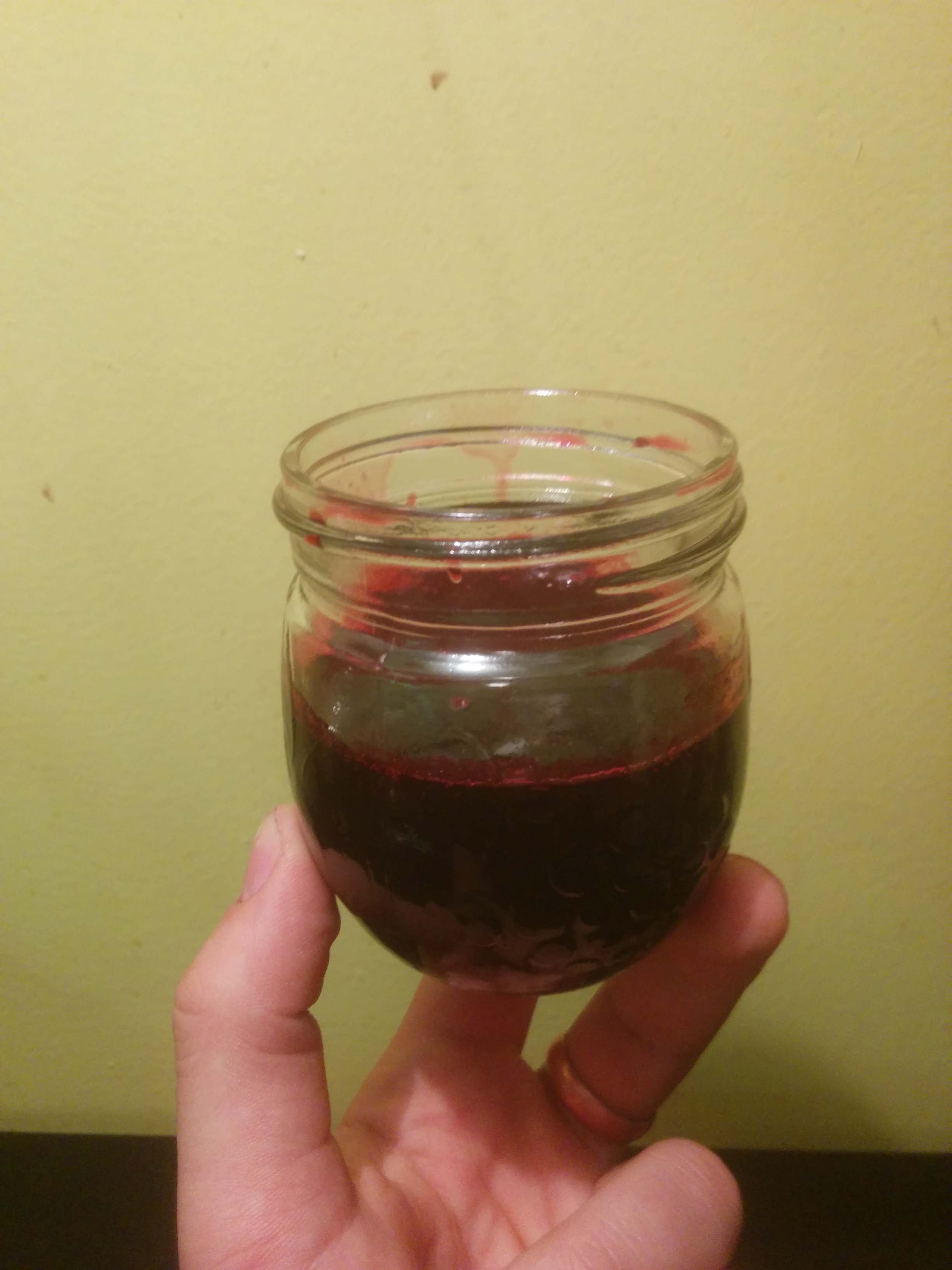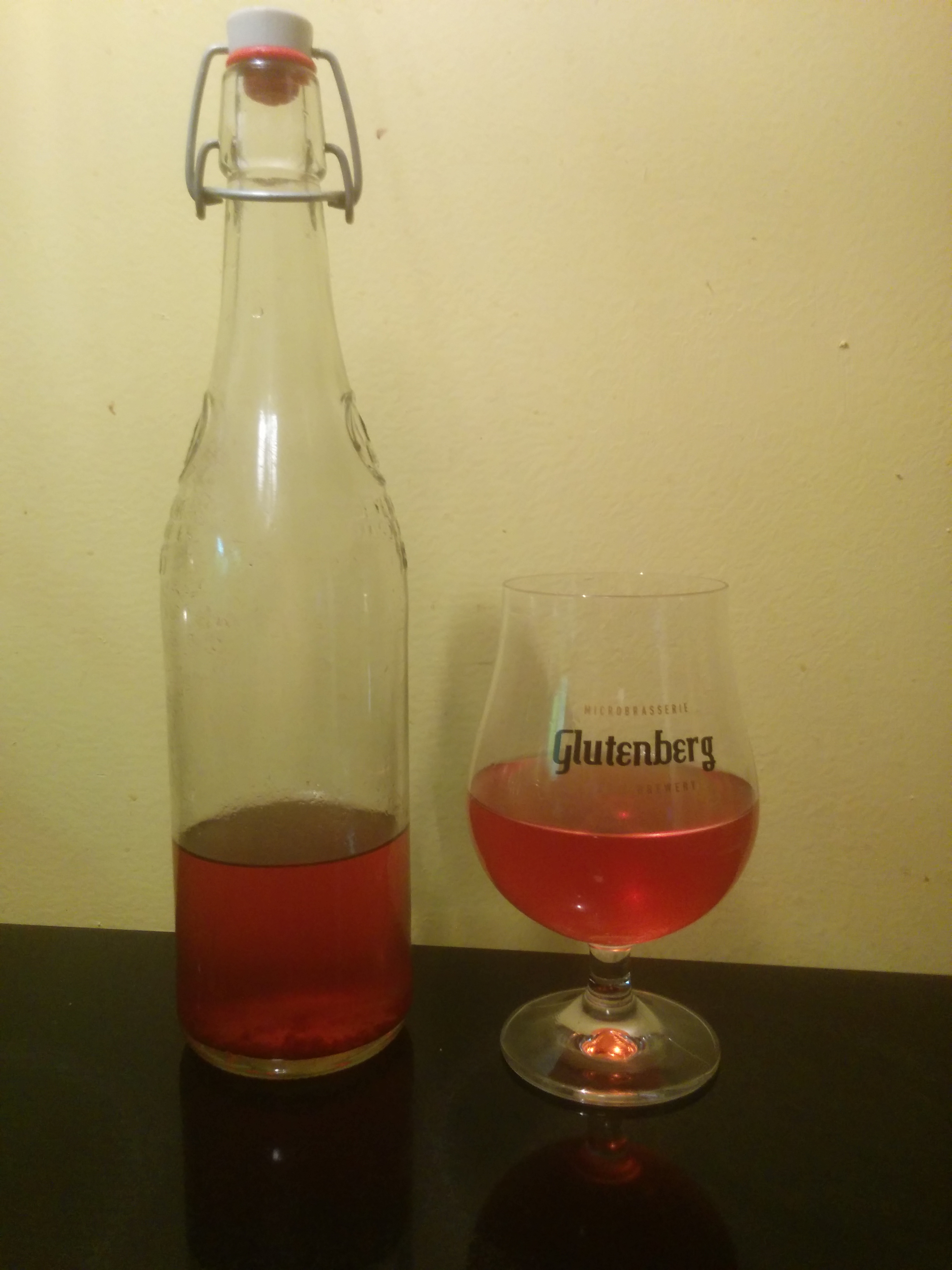It's been a while since I wrote anything here. To be honest, the last few months have been quite hectic (I was busy organising DebConf17 with some friends) and only now am I finding the time to do real stuff, like pickles and jams.
I'll be damned if I miss the pickle season. Autumn is slowly showing its nose here in Montreal and with that comes a season of abundance.
I know it sounds cliché, but it gets cold quite quickly here and nothing grows for a while. To me, the end of summer is a very special time where most of the food we eat is actually grown here too, and not in a far away USA industrial desert.
Anyway, it seems that as the years pass, I find more and more wild plants I just need to harvest and transform. Not that it makes me sad, on the contrary.
Elderberry Syrup

This year's addition to my preserve schedule is Elderberry Syrup. Sambucus canadiensis - the shrub that produces elderberries - is quite common in Montreal and it looks like no one is harvesting the berries. It seemed a shame to let all that good stuff go to waste, so I decided to make some syrup.
I harvested 1 kg of berries and after freezing and thawing them to break them down, I cooked the berries 5 minutes in a pot, added 1 kg of sugar and the juice of one large lemon and boiled the syrup for around 20 minutes.
The result is a little more than 1 liter of elderberry syrup. I don't think I had tasted elderberries before and I have to say I like it very much. To be honest I'm thinking about going back and making some more, as I think it would make good gifts for the holiday season.
Staghorn Sumac Lemonade

During the summer of 2009 I worked in a vineyard, mostly trimming vines and taking care of the apple orchard there. Most of the time I was working with an agricultural engineer in training and even though it was hard work and the days were long, I have fond memories of that summer.
Amongst a few things this guy taught me was that the fruit of the staghorn sumac - another common shrub in Quebec - is edible. Most people don't know it, but you can make tart and sour pink lemonade by letting them macerate in a large pot of water for 24 hours.
Add a little sugar, and you have a deliciously refreshing tart beverage. Bonus points for it being pink! I normally go out and harvest a large bag of it at the end of August, but this year my freezer is already full so I don't think I will drink it a lot.
Pickles and Sauerkraut, round 4
It's hard to believe, but it's now the 4th year I'm making pickles and sauerkraut. I guess I still haven't learned my lesson though, as my latest sauerkraut batch is too salty to my liking.
I think the main error I'm making is that I'm calculating the amount of salt to add based on the cabbages' weight, instead of using the total weight of the cabbage and liquid I'm adding. My fermentation crock is quite large and I always have to add a good 5 or 6 liters of brine to top it up.
The pickles are not ready yet, but I'm curious to see what that method will yield for them. I've used a 4% salt to pickle-and-brine ratio, as recommended by the neat fermentation book I bought a few months ago.
I have to say this was not an easy task, since you need to salt the brine before adding it to the crock, but you can't know the amount of brine you'll end up using until you've actually poured it on the pickles... I ended up making a guess and removing a liter of brine, adding more salt to reach the 4% mark and adding it back. I just hope it won't stay at the top and will mix with the rest of the brine.
For convenience, here's the salting table my book recommends. The percentage is based on the total weight of the fermentables and of the brine combined:
| Brine (salt/kg) |
2% (20g/kg) |
4% (40g/kg) |
10% (100g/kg) |
|
|---|---|---|---|---|
| All vegetables not mentioned in this table |
Pickles |
Beets |
Olives |
|
| Hot peppers and hot sauces |
Jerusalem artichokes | Umeboshi plums |
||
| Citrus | Citrus | Squashes | ||